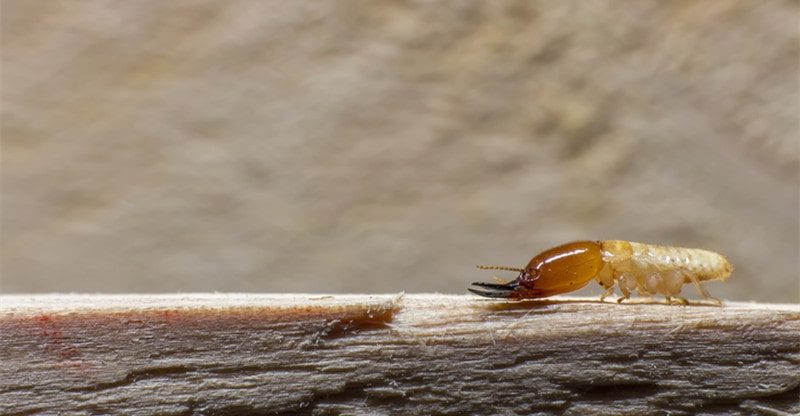What Attracts Termites To Your Home?
Termites are destructive pests that can wreak havoc on your home if left unchecked. They are attracted to various things in and around your home, and understanding what they are can help you take measures to prevent a termite invasion.
Sources Of Food For Termites
Termites are well known for their appetite for wood, but there are other food sources they have. Termites can feed on various organic materials and sometimes infest structures other than wood. If you are concerned about avoiding a termite infestation in your home, it’s essential to understand the different sources of food that termites might be attracted to.
One common termite food source is cellulose, which is present in many plant-based materials. This includes wood, paper, cardboard, and even certain fabrics. Termites are adept at breaking down cellulose into simple sugars that serve as their primary energy source. This is why termites sometimes infest homes with old newspapers or other paper products stored away.
Another source of food for termites is organic matter in the soil. Termites are attracted to areas with moist soil where plant material has decomposed. This is why termites are often found infesting mulch beds and other garden areas with high levels of organic matter. To reduce the risk of termite infestations in your yard, keep mulch beds at least a foot away from your home’s foundation and avoid over-watering plants.
Termites can also feed on dead or decaying plant matter, sometimes infesting fallen tree branches or piles of wood chips. Keeping stacks of firewood far away from your home and removing fallen tree branches promptly can help to reduce the risk of termite infestations.
Finally, it’s important to note that some species of termites can survive on sources of moisture alone. These termites, known as “dampwood termites,” require higher humidity levels than most species and can be more challenging to detect. Sources of moisture, such as leaky pipes or HVAC units, can attract dampwood termites to your home.
In conclusion, while wood is undoubtedly a prime target for termites, it’s essential to be aware of the other sources of food that these pests can feed on. By managing moisture levels, keeping organic matter away from your home, and avoiding storing plant-based materials near your living space, you can minimize the risk of a termite infestation.
The Ideal Environment For Termites
Termites are known to be one of the most destructive pests that can invade a home. They are attracted to damp, dark environments where they can thrive and multiply. If you want to protect your home from termite infestations, it is essential to understand the types of environments that termites are attracted to.
Excess moisture is one of the main factors that attract termites to an environment. Moisture provides an excellent breeding ground for termites and can cause wood to become damp and decay. This is particularly true in areas with poor drainage or standing water. If you notice areas around your home where water tends to collect, it is vital to address the issue as soon as possible to prevent termite infestations from occurring.
Another factor that attracts termites is wood debris and other organic matter. This includes tree stumps, wood piles, and decaying leaves. Termites feed on the cellulose in wood, and any source of wood debris can provide food for these pests. This is why it is important to keep your yard free from any wood debris and to dispose of it properly.
The type of soil around your home also plays a role in creating an environment that is attractive to termites. Moist soil can provide an ideal environment for termites to burrow and build their colonies. This is why ensuring that your home has proper drainage and no stagnant water around your foundation is crucial.
In addition to environmental factors, the condition of your home can also play a role in attracting termites. Cracks or gaps in your foundation or walls can provide an entryway for termites to enter your home and create their colony. Inspecting your home regularly and looking out for any signs of termite activity is essential. This includes checking for mud tubes, small holes in wood, and termite swarmers.
In conclusion, creating a homely environment for termites is vital in preventing termite infestations in your home. Addressing excess moisture, removing any wood debris, maintaining proper drainage, and inspecting your home regularly can help to keep termites at bay. If you suspect a termite infestation, it is important to call a professional pest control company to address the issue before it causes severe damage to your home.
Signs Of A Termite Infestation
Termites are a destructive pest that can cause significant damage to homes and other wooden structures. Unfortunately, termite infestations are often difficult to detect until severe damage has already been done. However, there are several signs of a termite infestation that homeowners can look out for.
One of the most apparent signs of a termite infestation is the presence of termite swarmers. These are winged termites that are often mistaken for flying ants. Termite swarmers are attracted to light and may be found around windows, doors, and light fixtures. If you see many winged insects around your home, it could signify a termite infestation.
Another sign of a termite infestation is the presence of discarded termite wings. After termites mate, they shed their wings. Finding small piles of branches around your home could indicate that a termite colony is nearby.
Homeowners should also be on the lookout for mud tubes. These are small tunnels made of dirt that termites use to travel between their colony and food sources. Mud tubes may be found on the exterior of homes, along foundations, or in crawl spaces.
Another sign of a termite infestation is damaged wood. Termites feed on wood and can cause significant damage to wooden structures over time. Homeowners should look for sagging floors, hollow-sounding wood, and visible tunnels in wood structures.
Lastly, homeowners should be aware of any moisture issues in their homes. Signs of moisture issues may include mold or water damage. Termites are attracted to moisture and may be more likely to infest homes with excess moisture or poor drainage.
If you notice any of these signs of a termite infestation in your home, it is crucial to contact a professional termite exterminator immediately. Termite infestations can cause significant and costly damage if left untreated, so it’s critical to address the problem directly.
Professional Termite Control Is A Must
If you’ve ever had to deal with a termite infestation in your home, you know how frustrating and costly it can be. Termites can cause significant damage to wooden structures, and they’re a persistent pest that can be difficult to get rid of on your own. Professional termite control is a must when dealing with these destructive pests.
There are a few key reasons why professional termite control is necessary. First and foremost, it’s crucial to identify the type of termite that’s infested your home. There are several species of termites, each requiring another treatment method. A professional termite exterminator has the knowledge and expertise to correctly identify the type of termite and implement the appropriate treatment plan.
Another reason why professional termite control is essential is that these pests are often challenging to find. Termites can hide in small cracks and crevices throughout your home, making them hard to detect. A professional termite exterminator knows where to look for these pests and can identify signs of an infestation you may miss.
One of the most significant benefits of professional termite control is that it can save you time and money in the long run. While it may seem tempting to try and deal with a termite infestation on your own, hiring a professional is often more cost-effective. A professional termite exterminator can quickly and efficiently eliminate the infestation, preventing further damage to your home.
Additionally, a professional termite exterminator will know how to prevent future infestations from occurring. They can evaluate your home and identify potential entry points for termites, as well as recommend steps you can take to reduce the risk of future infestations.
Finally, professional termite control is necessary for the safety of your family and home. Some treatment methods for termites involve using chemicals that can be harmful if not used correctly. A professional termite exterminator has the training and experience to handle these chemicals safely and effectively.



